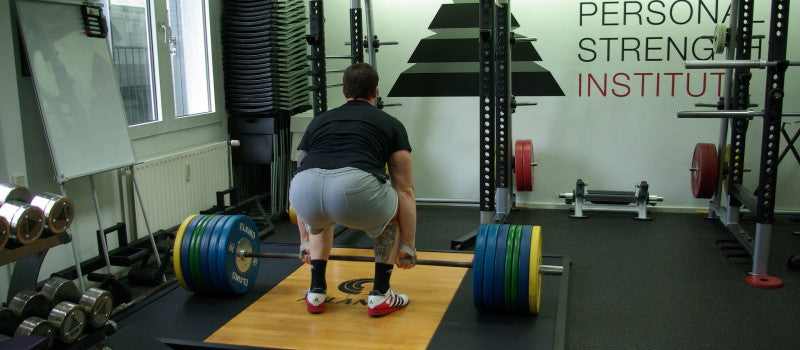
What is Tempo?
Tempo is one of most important loading parameters as it has a major impact on the training effect. A simple example is 15 Reps is not 15 Reps. 15 Reps at a 1010 Tempo is 30 seconds total time under tension. 15 Reps at a 3010 Tempo is 60 seconds total time under tension. The difference in Training effect between a set that lasts 30 seconds and a set that lasts 60 seconds is huge. Therefore the Tempo has to be prescribed and standardized in every training program to ensure the intended training effect.
Therefore every single program I give out includes a detail tempo prescription to ensure the training effect and progress I am interested to achieve.
I use a 4 digit tempo. As it is the most precise format that cover all 4 relevant parts of a repetition.
The definition is:
The first number – Lowering the weight
When you lower the weight the eccentric contraction occurs and the muscle lengthens under load. An example of this is when you lower yourself during the descent of the Squat. Eccentric Tempo is neglected in almost every average gym in the world. This is unfortunate, as the eccentric contraction is the most important in building size and strength.
The second number – Pause after lowering the weight
This pause after lowering the weight occurs between the eccentric (lowering) phase and the concentric (lifting) phase of a repetition. In the Squat this is when the hamstring fully covers the calve. Pauses in the disadvantageous position of a lift, such as the bottom position of a squat, increase intramuscular tension and decrease the strength reflex as explained with the Klokov Squat.
The third number – Lifting the weight
The concentric contraction occurs when a muscle shortens, such as when you stand up from the bottom of the squat. If an „X“ is used in the formula, it implies an explosive contraction with full acceleration. In this case the intent is more important than the actual visual lifting speed of the bar, though.
The forth number – Pause after lifting the weight
This is the point that occurs at the end of the concentric phase, such as when you have extended your knees fully at the top of the squat. Pauses in this “advantageous” position also increase the recruitment of fast-twitch fibers. Those fast-twitch fibers are the fibers that are crucial in developing Power, Strength and Size.
How its applied in a program
For example, a 4210 tempo prescription for the Squat would go like this. You lower yourself to the bottom position in four seconds. Then pause for two seconds when the hamstring makes full contact with your calves. Right after this, squat up in one second, and finally, there would be no rest at the top before you start the next repetition.
Of all training parameters that can be modified to design better strength training programs, the tempo is definitely the most underrated and neglected one. Using the tempo prescription will ensure the prescribed training effect which is the base maximal and sustainable progress in training.
Picture: YPSI Athlete Markus Bachofer in the starting position of a deadlift which is one of the most underrated exercises to use proper tempo for.
